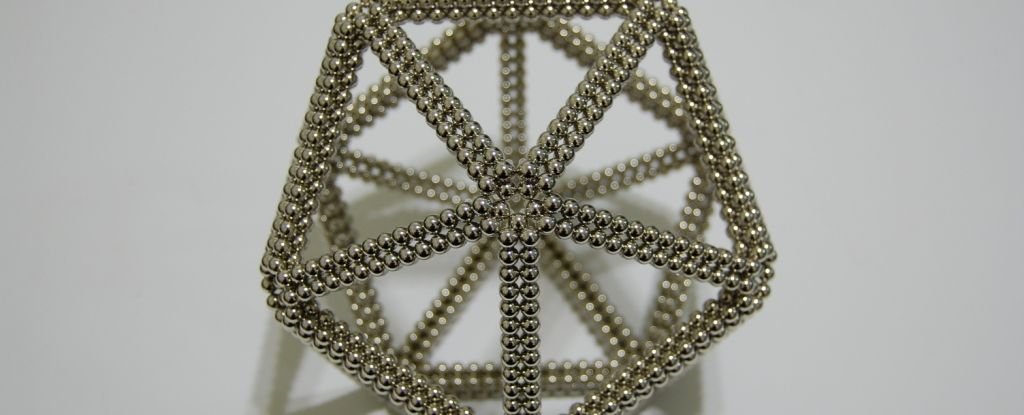Products You May Like
When disordered magnetic materials are cooled to just the right temperature, something interesting happens. The spins of their atoms ‘freeze’ and lock into place in a static pattern, exhibiting cooperative behavior not usually displayed.
Now for the first time, physicists have seen the opposite. When fractionally heated, the naturally occurring magnetic element neodymium freezes, turning all our expectations topsy turvy.
“The magnetic behavior in neodymium that we observed is actually the opposite of what ‘normally’ happens,” said physicist Alexander Khajetoorians of Radboud University in the Netherlands.
“It’s quite counterintuitive, like water that becomes an ice cube when it’s heated up.”
In a conventional ferromagnetic material, such as iron, the magnetic spins of the atoms all align in the same direction; that is, their north and south magnetic poles are oriented the same way in three-dimensional space.
But in some materials, such as some alloys of copper and iron, the spins are instead quite random. This state is what is known as a spin glass.
You might be thinking “but neodymium is well known for making excellent magnets” and you’d be right… but it has to be mixed with iron in order for the spins to align. Pure neodymium doesn’t behave like other magnets; it was only two years ago that physicists determined this material is, in fact, best described as a self-induced spin glass.
Now, it seems, neodymium is even stranger than we thought.
When you heat a material, the rise in temperature increases the energy in that material. In the case of magnets, this increases the motion of the spins. But the opposite also occurs: When you cool down a magnet, the spins slow.
For spin glasses, freezing temperature is the point at which the spin glass behaves more like a conventional ferromagnet.
Led by physicist Benjamin Verlhac of Radboud University, a team of scientists wanted to probe how neodymium behaves under changing temperatures. Interestingly, they found that raising the temperature of neodymium from -268 degrees Celsius to -265 degrees Celsius (-450.4 to -445 Fahrenheit) induced the freeze state usually seen when cooling a spin glass.
When the scientists cooled the neodymium back down, the spins once again fell into disarray.
It’s unclear why this occurs, since it’s very rare that a natural material behaves in the ‘wrong’ way, contrary to how all the other materials of its kind behave. However, the scientists believe that it may have to do with a phenomenon called frustration.
This is when a material is unable to attain an ordered state, resulting in a disordered ground state, such as we see in spin glasses.
It’s possible, the researchers said, that neodymium has certain correlations in its spin glass state that are dependent on temperature. Raising the temperature weakens these, and also therefore the frustration, allowing the spins to settle into an alignment.
Further investigation could reveal the mechanism behind this odd behavior in which order emerges from disorder with the addition of energy; the researchers note this has implications ranging far beyond physics.
“This ‘freezing’ of the pattern does not normally occur in magnetic material,” Khajetoorians explained.
“If we ultimately can model how these materials behave, this could also be extrapolated to the behavior of a wide range of other materials.”
The research has been published in Nature Physics.
